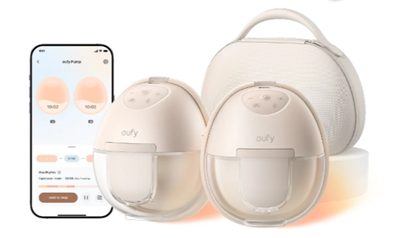Huawei
Time: globisoftware
On: Jun/30/2025
Category: Huawei iphone samsung Digital life
Breastfeeding provides optimal nutrition for infants, and storing milk safely ensures your baby receives these benefits even when you can’t nurse directly. Understanding how long breast milk remains fresh in the fridge is crucial. Proper storage avoids waste and keeps your baby healthy. This guide discusses refrigeration effects, storage techniques, and common pitfalls when saving breast milk. Equipped with this knowledge, you can feel confident in maintaining the highest milk quality for your little one.

How Refrigeration Affects Breast Milk Freshness
Ideal Refrigerator Temperature Settings
Keeping breast milk fresh starts with setting your fridge to 3-4°C (37-40°F). This temperature range slows bacterial growth, preserving milk quality and nutrients. Regularly check your fridge’s thermostat to maintain this setting. Consider using a fridge thermometer. A consistent temperature ensures your stored breast milk longevity and safety for your baby. Make sure the fridge isn’t overloaded, as blocked airflow can reduce cooling efficiency and compromise milk freshness.
Factors That Shorten Shelf Life
Several factors can compromise breast milk’s freshness in the fridge. First, ensure airtight sealing to prevent exposure to other food odors and bacteria. Frequent temperature fluctuations from opening the fridge also shorten shelf life. Finally, previously frozen milk has a reduced lifespan when transferred to the fridge. Be mindful of these factors to prolong storage life. Also, avoid placing hot leftovers nearby, which can momentarily warm the surrounding area and affect the milk's integrity.
Signs That Refrigerated Milk Has Gone Bad
Recognizing spoiled milk is crucial to avoid feeding your baby unsafe milk. Look for off-putting smells, sour taste, and a change in texture, like separation into layers. Although some separation is normal, shake the milk gently; if it doesn’t mix well, it may have spoiled. Discard any breast milk you suspect may be bad to protect your child’s health. When in doubt, compare with freshly expressed milk to get a sense of normal vs. questionable appearance and scent.
Storing Breast Milk in the Fridge: Step-by-Step
Choosing and Preparing Storage Containers
Select BPA-free, food-grade containers or milk storage bags to store breast milk safely. Before use, wash containers with hot soapy water and allow them to air dry. Pre-sterilizing containers, especially for babies with weaker immune systems, adds an extra layer of safety. Ensure that the container seals well to preserve milk quality. Avoid containers with narrow necks if you plan to freeze milk later, as expansion may cause cracking or leaking during storage.
Labeling and Tracking Storage Time
Label each breast milk container with the date and time of expression. This practice helps you track freshness and ensure you use the oldest milk first. Consider using adhesive labels or a permanent marker. Storing milk efficiently prevents accidental spoilage and guarantees your baby always receives high-quality milk. If you're using shared childcare or pumping at work, labels also help avoid confusion between multiple batches or users in the same fridge.

Proper Placement Inside the Fridge
The best place for storing breast milk is at the back of the fridge on a middle shelf, ensuring a stable, cold environment. Avoid placing milk on the fridge door, where temperature fluctuations frequently occur. Consistent placement preserves essential nutrients by providing an even, low-temperature environment. You can also dedicate a storage bin or container just for breast milk to help keep it organized and avoid accidental spills or contamination.
Mistakes to Avoid When Refrigerating Breast Milk
Mixing Fresh and Previously Stored Milk
Avoid mixing freshly expressed milk with already refrigerated milk. Temperature discrepancies can affect the quality and freshness. Instead, cool freshly expressed milk to the same temperature as stored milk in the fridge before combining them. This practice helps prevent spoilage and maintains milk safety. Mixing milk with different freshness levels could shorten the usable window, so always combine with care and within the same day if necessary.
Reheating and Re-storing Issues
Breast milk should not be reheated or refrozen once it’s been warmed. Warming milk encourages bacterial growth if not used immediately. Always measure and warm only what you expect to use for a single feeding. Remaining milk from a feeding should be discarded to ensure your baby’s health and safety. Even if the milk looks fine, bacteria from saliva can alter it quickly, making reuse unsafe.
Placing Milk Near the Fridge Door
One common mistake is storing milk on the fridge door. The frequent opening and closing cause temperature fluctuations. This can shorten the storage period. Instead, place milk in the main body of the fridge, where the temperature remains more constant, preserving its nutrients and safety effectively. Keeping it in the door may seem convenient, but even brief temperature changes can degrade its quality and reduce shelf life.
Conclusion
Properly storing breast milk in the fridge is essential to ensure your baby receives safe, high-quality nutrition. Understanding how long is breastmilk good in the fridge allows you to make informed decisions, reduce waste, and preserve its nutritional value. By following storage guidelines, monitoring temperature, and recognizing signs of spoilage, you can confidently maintain the freshness of expressed milk. These habits not only support your baby’s health but also simplify your daily routine and bring peace of mind to your feeding schedule.
